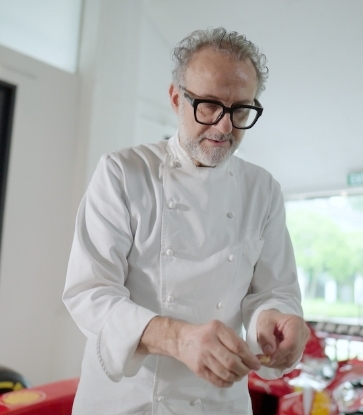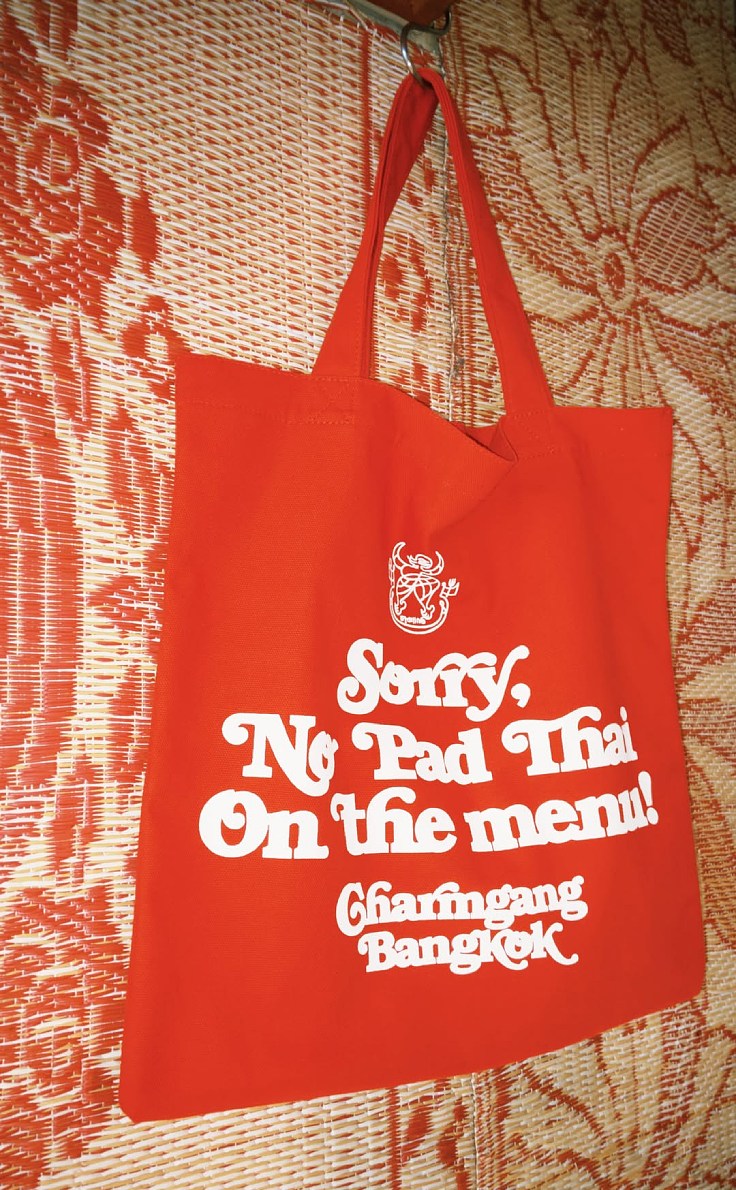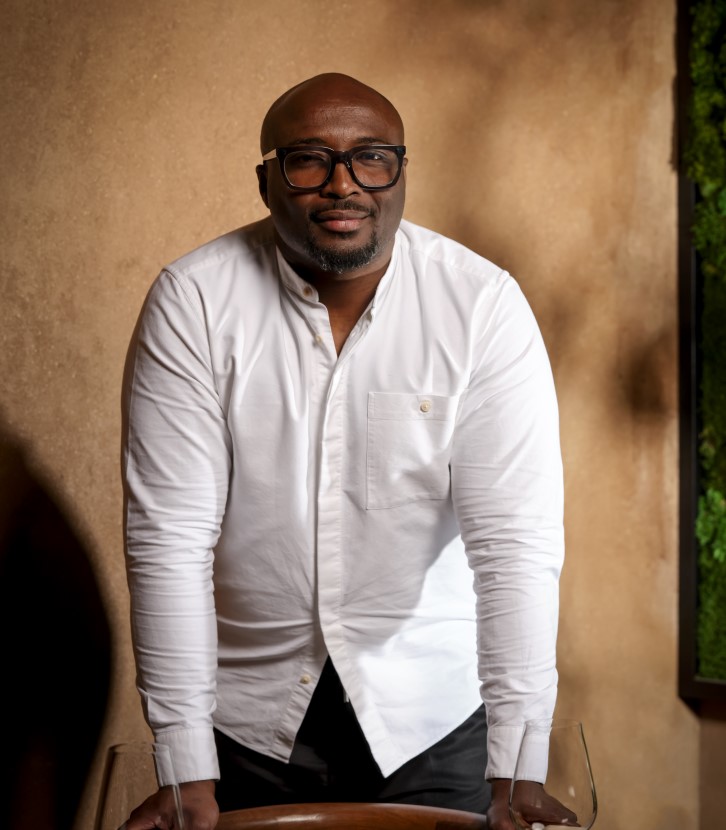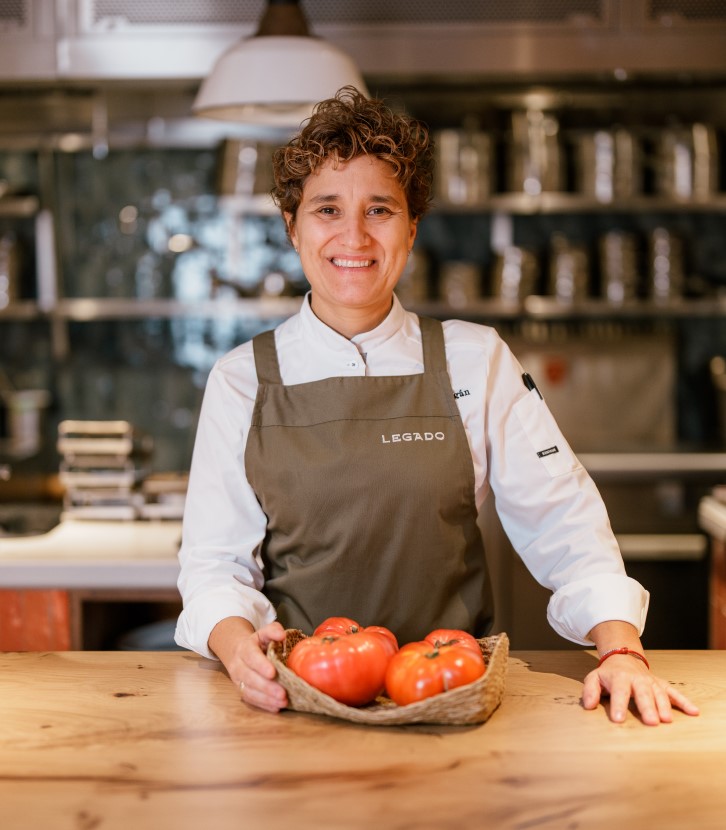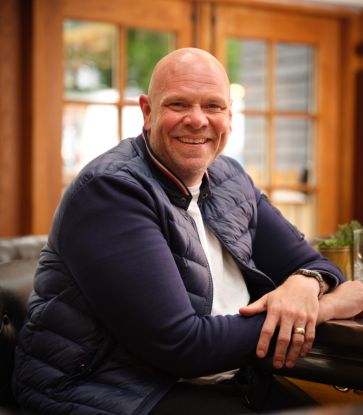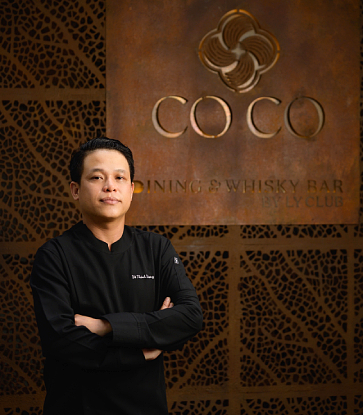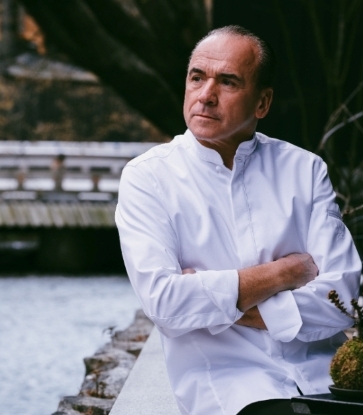“Vietnamese food is in my blood. It’s a fundamental part of who I am as a person.”
Few chefs have a backstory as colourful as Peter Cuong Franklin’s. Born in a war-ravaged Vietnam, Franklin fled the country as a child in 1975, resettled in the United States, and graduated from Yale. He then launched himself into investment banking, a career path that took him across the world.
Successful but unsatisfied, Franklin was keen for the next adventure. He enrolled at Le Cordon Bleu and sharpened his skills in some of the world’s best restaurants before establishing two of his own in Hong Kong: Viet Kitchen and Chom Chom.
Franklin returned to Vietnam in 2017 and opened Ănăn Saigon (one MICHELIN Star, MICHELIN Guide Vietnam 2023). Ănăn, which means “eat eat”, sits on Ton That Dam Street, a narrow lane synonymous with Chợ Cũ (Old Market), central Ho Chi Minh City’s vibrant fresh food market. Surrounded by mounds of tropical fruit and buckets of live seafood, Ănăn Saigon is nestled in a repurposed shophouse with rich views of this animated outdoor emporium.
Vietnam has reinvented itself numerous times since 1975, but so has Franklin, and he attributes his adaptability and creativity to his unconventional background. He also believes that these attributes are fundamental for a successful career in the culinary arts. “I advise young chefs that in the modern world, we need thinkers, problem solvers, and creators – not just followers of recipes.”
We catch up with Franklin to talk about why going off-menu – as he has done throughout his career(s) – can be a recipe for success.

So, your restaurant was the first to be awarded a MICHELIN Star. How did it feel?
“Surprised! But I also feel deeply honoured that Ănăn Saigon was the first and only restaurant awarded one MICHELIN Star in Ho Chi Minh City. The recognition is even more gratifying since our team has worked so hard over the past six years. We’ve been through many tough challenges – especially during the Covid period when our survival as a restaurant was in doubt.”
Can you tell us a little bit about your journey to becoming a chef?
"Before training as a chef, I worked in investment banking—a career that took me to New York, London, and Hong Kong. I loved it, but it wasn't quite right, so I decided to pursue my passion for the culinary arts at Le Cordon Bleu."
“After that, I was hooked. I trained at world-famous restaurants including Alinea in Chicago, Nahm in Bangkok, and Caprice in Hong Kong. As one of the great culinary cities, Hong Kong was the perfect place to start my career as a chef. I launched and ran two successful restaurants there, but then felt it was time to take on a new challenge.
“I returned to Vietnam and opened Ănăn Saigon six years ago. In many ways, the journey has come full circle: the boy who left his motherland as a refugee has returned home and become a chef of a MICHELIN Star restaurant in Ho Chi Minh City.”

How were you introduced to Vietnamese food in the first place?
“As a child, I grew up in Dalat in Vietnam’s Central Highlands. My mum ran a small noodle shop in the tiny living room of our house, so I was always surrounded by food. She is my inspiration. She was one of the best cooks in the village and people would travel from far and wide just to eat her famous dishes, including chả lụa (steamed pork rolled in banana leaf), nem nướng (grilled pork sausage with a peanut dipping sauce) and mì Quảng (prawn & pork turmeric noodle soup).
“Although I didn’t become a professional chef until later in life, Vietnamese food has always been in my blood. It’s a fundamental part of who I am as a person.”
So then why did you choose to return to your roots, so to speak, after working in kitchens around the world?
“You could say that I heard the whispers of Mother Vietnam calling me back home rather than me choosing to return. I also find the vibrancy, excitement, and freedom in Ho Chi Minh City very addictive. The Saigonese and the city's food culture are great sources of inspiration for me.”
“Even after six years, new discoveries still amaze me everyday. Vietnam's food scene has evolved so much, and it's time to showcase not only our renowned street food but also our high-end dining thanks to recognition from the MICHELIN Guide. I believe the two can coexist, supporting each other in our hospitality and tourism industry. With the arrival of MICHELIN Guide in Vietnam, a new generation of talented Vietnamese chefs is emerging, ready to take on the challenge.”

“Vietnamese cuisine is among the best in the world because it is fresh, flavourful, and balanced, with a unique combination of culinary influences from French, Chinese, and other Southeast Asian cultures. In addition, the cuisine is blessed with a regional diversity of ingredients from the northern, central, and southern parts of the country.
“Now, what makes Vietnamese food special is the abundant use of fresh herbs like mint, cilantro, and lemongrass, as well as pungent fish sauce and various spices for marinades and seasoning. The harmony of spicy, sour, bitter, salty, and sweet flavours is also special. Take phở, Vietnam’s classic noodle soup, as an example. The bone broth is infused with cinnamon, star anise, lime, and fresh herbs, resulting in a balanced dish that is undeniably delicious. And yet it doesn’t overwhelm the palate.”
A chef once told me that many Vietnamese dishes are a little like Italian dishes: They rely on fresh ingredients rather than complex recipes. Do you think there’s any truth in that?
“I think there is some truth in that both Vietnamese and Italian cuisines rely on fresh quality ingredients with minimal manipulation and simple recipes to create wonderful dishes. Fresh herbs, vegetables and aromatics are fundamental to Vietnamese cooking.”
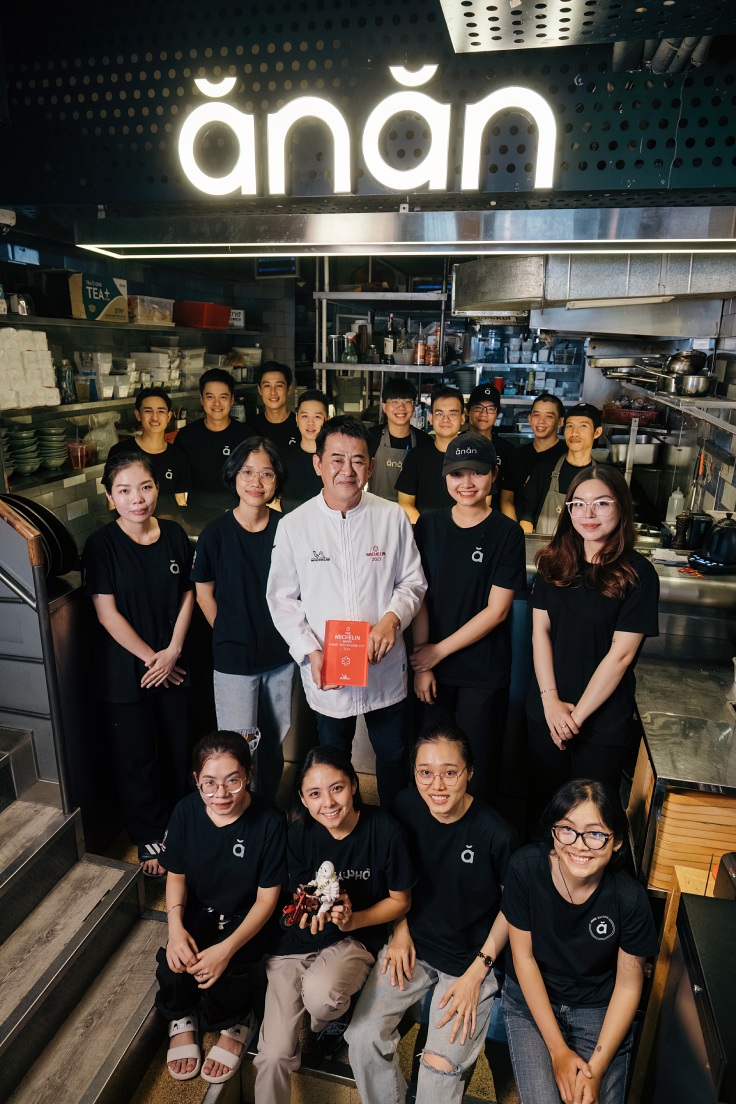
Tell us some interesting facts about Vietnamese food. The sort of thing that would raise eyebrows at a dinner party.
“Phở and bánh mì are iconic Vietnamese dishes that are popular around the world, but they are not everyday meals at home. Why?
“Vietnamese people consider phở and bánh mì as ăn chơi, or ‘play food’, a snack to eat out. The food that Vietnamese people eat at home is almost always rice-based; indeed, ‘to have a meal’ in Vietnamese is ăn cơm, or ‘eat rice’. A typical Vietnamese home cooked meal therefore consists of steamed jasmine rice, braised fish or pork, steamed or sautéed vegetables, and a light broth soup accompanied by a plate of fresh herbs and fish sauce-based dipping sauces.”
Vietnamese people can be quite protective over their dishes. Have you had any major disagreements with other chefs in Vietnam? Do you feel that there is room to innovate?
“It’s true that Vietnamese people tend to be very proud of the dishes from their respective hometowns. One sure-fire way to start an argument is to say: ‘This is the best phở in Vietnam’. While the debate rages as to the location of Vietnam's best phở, I tend to avoid controversy by saying I love them all in their own special way. Some of the disagreements relate to regional differences in taste as well as the tension between tradition and innovation.
“At Ănăn Saigon I strive to maintain a delicate balance, using innovation to elevate street food and traditional dishes towards a fine dining experience. But at the same time, I incorporate French and modern culinary techniques and retain the essential flavours at the heart of traditional Vietnamese cuisine.”

Phở seems to have played an important part in your career. What does the dish mean to you, and what does it mean to Vietnam?
“When I first opened Ănăn Saigon, I wanted people to know that there is much more diversity to Vietnamese cuisine than just phở and bánh mì. There are so many other wonderful dishes, like bún bò Huế (spicy noodle soup), bò kho (beef stew), chả cá (fish with turmeric and dill), and nem nướng (pork skewers). Some variations of these dishes are available at Ănăn Saigon.
“However, since phở is such an iconic national dish for Vietnam, it cannot be ignored. Phở has become one of the dishes that has made my career as a chef, with signature dishes like the Bone Marrow Phở, Le Pot Au Phở, Molecular Phở (the taste of phở in one bite), and the infamous (laughs) $100 Phở to challenge people’s perceptions and question the perceived value of Vietnamese cuisine.”
The location of Ănăn is rather distinct as it’s situated in the middle of Chợ Cũ, a traditional street market in central Ho Chi Minh City. Why there?
“Despite the market’s humble and dilapidated exterior, many of the vendors at Chợ Cũ have been here for generations – and they’re known to provide some of the highest-quality herbs, fruits, vegetables, meats, and other products in the city.
“Based in the middle of the market, Ănăn Saigon reflects my vision of the new Saigon by connecting the traditional street market with quality ingredients, time-honoured cooking techniques, and modern presentation. We have access to all its fresh ingredients, and at the same time, we have the elements of both old and new Saigon all in one place.”
What are your plans for the future?
“For traditional phở, people should try the various local places listed as Bib Gourmand eateries. They all offer quality food that is good value for money.
“But for those who want to try a modern phở, I’ll be opening POT AU PHỞ in September this year. It’s a modern phở restaurant with French and Japanese influences that offers a menu of elevated classic Vietnamese dishes. The restaurant is easy to find: just one floor up from Ănăn Saigon.”
Illustration image: © Mervin Lee/ MICHELIN Guide Vietnam




